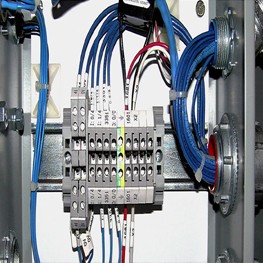Electrical Design Training Course

Staying current with industry codes and standards is non-negotiable.
This training program covers the most recent electrical laws, including the latest versions of the International Electrotechnical Commission (IEC) and the National Electrical Code (NEC), to guarantee your designs meet safety and compliance standards.
This expertise not only secures your more projects, but it also positions your company as a competent
and trustworthy in electrical engineering sector.
This is another rapidly-expanding career field due to
the rapid expansion of electric-related fields. While the most increase in power use came relatively recent, the demand for many types of skilled electrical practitioners is expected to rise by the end of this decade – 24%.
This and many reasons are why we are dedicated to developing a trusted source of modern skills that shall enable you beat your competition, standing out as a company with highly
trained and updated engineers able to show results in the current job market.
INSTRUCTORS:

Eric NDIZIHIWE
ASSISTANT TRAINER/ MEP ENGINEERING DEPARTMENT
This is an Autodesk-certified electrical design professional training that seeks to accommodate planning, creating, testing or supervision of the development and installation of electrical systems like lighting equipment, power systems, power distribution, fire alarms, ICT cabling, life safety systems, other related systems.
A key factor for success in the fast-paced realms of electrical engineering is staying one step ahead. As technology change sweeps through any industry, staying at the top of the latest tools and techniques is vital. AutoCAD is one such product, which has become obligatory for electrical engineers.
Prioritizing industry-based professional training using dedicated software technology might be what you have been missing if you are an electrical engineering business trying to dominate your competitors. This professional training in building electrical designs using AutoCAD opens up doors to the world of opportunities and advancement.
Here is what you can expect at the end of this training:
- Acquire a thorough understanding of AutoCAD’s interface, basic commands, and project setup for efficient electrical design in buildings.
- Gain insights into electrical concepts, components, circuits, and basic calculations, enhancing your proficiency in electrical engineering.
- Develop skills in creating wiring diagrams, schematics, and organizing panel layouts, essential for effective electrical system design.
- Understand power distribution systems, single-line diagrams, three-phase systems, voltage drop analysis, and transformer sizing for accurate electrical design.
- Learn the importance of lighting simulation using Dialux for precise lighting design and analysis, covering topics from interface navigation to emergency lighting scenarios.
- Explore seamless integration between Dialux and AutoCAD, ensuring collaboration and consistency between lighting and overall electrical design.
- Gain expertise in designing main electrical subsystems, including small power systems, fire alarm systems, local area networks, security camera systems, and access control systems.
- Understand and implement electrical safety practices, comply with the National Electrical Code (NEC), and grasp grounding and bonding principles.
- Explore advanced features, use manufacturer catalogs, and create custom symbols and macros for personalized electrical design solutions.
- Learn how to gather design information, define material specifications, create accurate bills of quantities, and calculate project costs.
- Receive Autodesk certificates upon successful completion of the training, demonstrating proficiency and adherence to industry standards.
- Ensure that your electrical designs align with established standards, codes, and regulations, enhancing the quality and safety of your projects.
Who should attend this training:
The “Electrical Design with AutoCAD and Dialux” training is designed for a diverse range of professionals involved in electrical engineering. The course is suitable for individuals in various roles within the construction and electrical industries. Here are the primary target audiences for this training:
Electrical Engineers: Individuals responsible for electrical system design, analysis, and implementation in buildings.
Electrical Designers: Professionals involved in creating electrical drawings, schematics, and layouts for buildings.
Project Managers in Electrical Engineering: Those overseeing electrical design projects, ensuring adherence to standards and regulations.
Lighting Designers: Professionals focusing on lighting design in buildings, interested in incorporating Dialux for accurate lighting simulations.
Electrical Contractors: Individuals involved in the installation and implementation of electrical systems in buildings.
Building Services Engineers: Professionals dealing with the design and integration of various building services, including electrical systems.
Fresh Graduates in Electrical Engineering: Individuals who recently graduated a college and are starting a career in electrical engineering who must enhance their skills to fit in a company.
By catering to this diverse audience, the training aims to provide a comprehensive skill set that is applicable across various roles and responsibilities within the electrical engineering of construction sectors.
